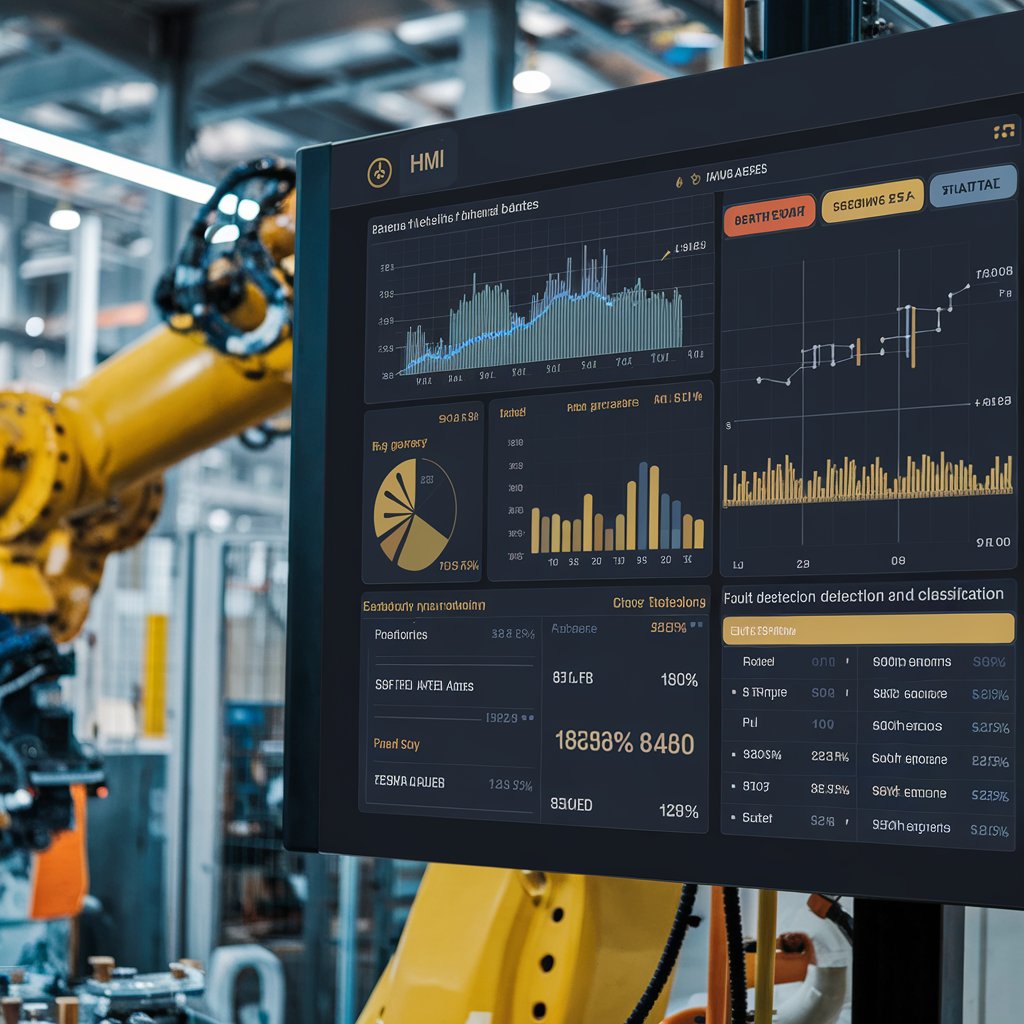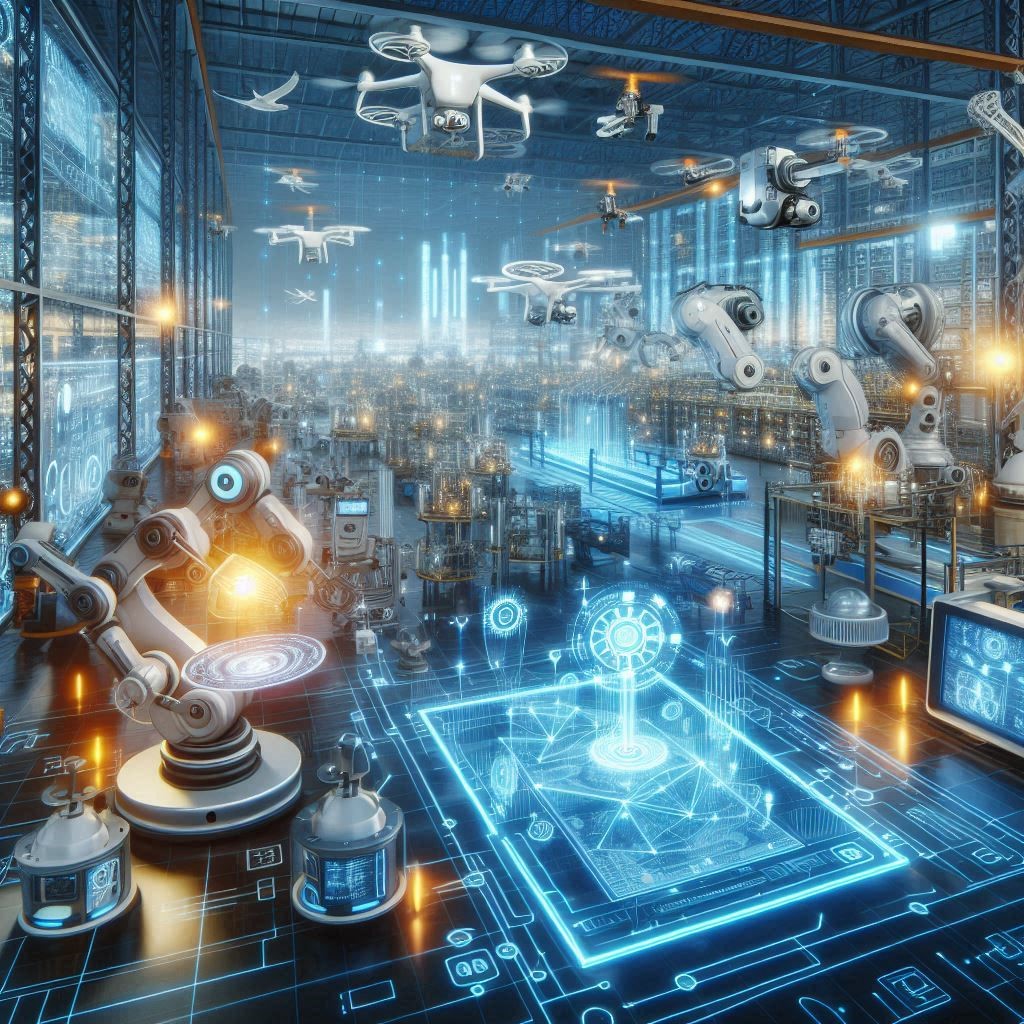In today’s fast-paced manufacturing landscape, industrial automation has emerged as a game-changer, offering manufacturers the ability to streamline operations, increase productivity, and reduce costs. As the world moves towards Industry 4.0, the adoption of industrial automation software is becoming a crucial driver of operational efficiency and innovation. With advancements in technology such as artificial intelligence (AI), machine learning (ML), and the Internet of Things (IoT), the industrial automation software market is experiencing significant growth. This article explores the key trends and growth opportunities in the industrial automation software market.
Understanding Industrial Automation Software
Industrial automation software refers to software solutions used to control and manage machinery, processes, and systems in industrial environments such as manufacturing plants, factories, and production lines. These software solutions enable the automation of repetitive tasks, data collection, process monitoring, and real-time control, eliminating human intervention in most scenarios.
The main types of industrial automation software include:
- Supervisory Control and Data Acquisition (SCADA): SCADA systems collect real-time data from equipment and process systems, enabling operators to monitor and control processes remotely.
- Manufacturing Execution Systems (MES): MES software manages and monitors the production process, ensuring that operations align with production schedules and quality standards.
- Distributed Control Systems (DCS): DCS are used to control complex industrial processes with a focus on continuous production, such as in chemical plants or oil refineries.
- Programmable Logic Controllers (PLC): PLC systems control machinery and processes in real-time, often in industries like automotive and food processing.
- Enterprise Resource Planning (ERP): ERP systems integrate all aspects of a business, from procurement to production, to enhance coordination and efficiency.
The global industrial software industry is expected to be valued at USD 21.5 billion in 2024 and is projected to reach USD 46.6 billion by 2029; it is expected to grow at a CAGR of 16.7 % from 2024 to 2029. The industrial software market is propelled by several key factors driving smart manufacturing and intelligent factory initiatives globally. Adopting Industry 4.0 technologies such as IoT, AI, big data analytics, and cloud computing is pivotal in enhancing operational efficiency and agility. Industrial software solutions like MES, SCADA, and HMI systems optimize production processes by providing real-time monitoring, resource management, and workflow automation, reducing downtime and improving productivity.
Key Trends Shaping the Industrial Automation Software Market
1. The Rise of Industry 4.0 and Smart Manufacturing
The shift towards Industry 4.0, characterized by the integration of digital technologies into manufacturing processes, is a key trend driving the demand for industrial automation software. Smart manufacturing, powered by IoT, AI, and big data analytics, allows businesses to create highly efficient and flexible production systems. Automation software plays a central role in enabling these technologies to function cohesively, helping manufacturers optimize processes, enhance productivity, and ensure product quality.
As manufacturers embrace smart factories and interconnected devices, industrial automation software acts as the backbone that enables these systems to communicate, analyze data, and adjust processes in real-time. This trend is expected to drive continued demand for advanced automation software solutions.
Download PDF Brochure @
https://www.marketsandmarkets.com/pdfdownloadNew.asp?id=27555137

2. Integration of Artificial Intelligence (AI) and Machine Learning (ML)
The integration of AI and machine learning (ML) into industrial automation software is revolutionizing how manufacturers approach automation. These technologies enable predictive maintenance, intelligent process optimization, and enhanced decision-making. AI-powered software can analyze vast amounts of data collected from sensors and machines to predict when equipment will fail, allowing for proactive maintenance and reducing downtime.
Machine learning algorithms can also optimize production schedules and resource allocation by analyzing historical data and adjusting processes to maximize efficiency. As AI and ML continue to evolve, their applications in industrial automation software will grow, creating new opportunities for businesses to improve operational performance.
3. Increased Adoption of Cloud-Based Solutions
Cloud computing is increasingly becoming a critical component of industrial automation. Cloud-based automation software provides manufacturers with greater flexibility, scalability, and cost-efficiency compared to traditional on-premise solutions. With cloud-based software, businesses can store vast amounts of data, access it remotely, and collaborate across teams in real-time, all while reducing the need for expensive hardware and infrastructure.
Additionally, cloud-based automation solutions enable manufacturers to implement Software-as-a-Service (SaaS) models, allowing them to pay for only the software they need without the burden of maintaining in-house IT systems. This trend is particularly appealing to small and medium-sized businesses (SMBs) that seek to leverage automation without incurring large upfront costs.
4. Industrial Internet of Things (IIoT) and Connectivity
The Industrial Internet of Things (IIoT) is transforming the industrial automation software market by enabling seamless connectivity between devices, machinery, and sensors. With the proliferation of IIoT devices, manufacturers can collect real-time data from the production floor and use it to make informed decisions.
IIoT allows for better integration of automation software with physical systems, improving communication between machines and software platforms. For example, IIoT-enabled sensors can detect equipment malfunctions and transmit data to automation software, triggering alerts and allowing maintenance personnel to respond quickly. As IIoT adoption grows, industrial automation software will continue to evolve to accommodate the vast amounts of data generated by connected devices.
5. Cybersecurity and Data Protection
As industries become more connected and reliant on automation software, the risk of cyber threats increases. Cybersecurity is now a top priority for businesses implementing industrial automation solutions. Manufacturers must ensure that their automation systems are secure from cyber-attacks and data breaches that could disrupt production or compromise sensitive information.
Automation software providers are responding to these challenges by integrating robust cybersecurity features into their solutions. Encryption, multi-factor authentication, and secure data transmission protocols are becoming standard practices in industrial automation software to protect both physical systems and digital assets.

Growth Opportunities in the Industrial Automation Software Market
1. Expansion into Emerging Markets
The industrial automation software market is experiencing rapid growth in emerging economies, particularly in regions like Asia-Pacific, Latin America, and the Middle East. As industrialization accelerates in these regions, there is increasing demand for automation solutions that can improve manufacturing efficiency, quality, and cost-effectiveness.
Countries like China and India are heavily investing in automation technologies to modernize their manufacturing sectors, creating significant opportunities for software providers. Additionally, the growing trend of digitalization in industries such as automotive, food processing, and chemical manufacturing presents new avenues for growth.
2. Adoption in Small and Medium-Sized Enterprises (SMEs)
While large enterprises have traditionally been the primary adopters of industrial automation software, the trend is shifting as small and medium-sized enterprises (SMEs) also recognize the value of automation. Affordable, scalable, and cloud-based automation software solutions are allowing SMEs to streamline operations, improve productivity, and stay competitive in the market.
As automation becomes more accessible to smaller manufacturers, the industrial automation software market is expected to expand further, with new opportunities emerging in sectors traditionally underserved by automation.
3. Focus on Sustainability and Energy Efficiency
As global sustainability efforts intensify, industrial automation software is playing a key role in improving energy efficiency and reducing waste. Manufacturers are turning to automation to optimize energy consumption, minimize raw material waste, and lower their carbon footprint. By utilizing automation software to monitor and control energy usage, businesses can achieve sustainability goals while improving operational efficiency.
Software solutions that help manufacturers optimize energy use in real-time will continue to gain traction as environmental concerns and regulations drive the need for greener manufacturing processes.
The industrial automation software market is at the forefront of transforming manufacturing and industrial operations. With key trends such as Industry 4.0, the integration of AI and ML, the rise of cloud-based solutions, and the proliferation of IIoT devices, the market is poised for significant growth. As businesses seek to improve operational efficiency, reduce costs, and stay competitive, automation software will continue to play a central role in shaping the future of industries worldwide.
With abundant growth opportunities in emerging markets, the expansion of SMEs, and increasing demand for sustainable manufacturing, the industrial automation software market offers tremendous potential for innovation and investment. As the industry evolves, the focus on advanced, intelligent, and secure solutions will drive the next wave of transformation in industrial automation.
